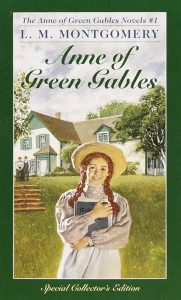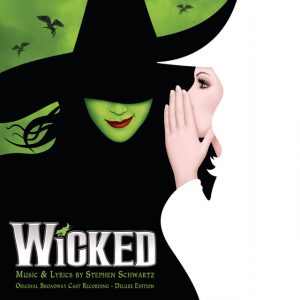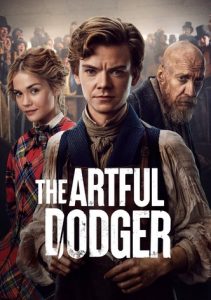For my final project, I decided to take a look at the official trademark regime of Anne of Green Gables and ended up becoming very angry about it. Enjoy!
If you grew up as a child in Canada in the last century, it was hard to avoid Lucy Maud Montgomery’s Anne of Green Gables series (a task made even more difficult if, like me, your mother is from the Maritimes). Montgomery wrote 8 Anne of Green Gables novels in her lifetime and, since Anne’s inception in 1908, the series’ first novel has become Canada’s most translated book,[i] sold over 50 million copies,[ii] and become synonymous with Prince Edward Island. The series’ first novel entered Canada’s public domain in 1992.[iii]

Lucy Maude Montogmery’s first and titular novel in her Anne of Green Gables series.

Anne of Green Gables has become perhaps the foremost tourist attraction in Prince Edward Island.
A spunky red-headed orphan whose story ranges from her early adolescence to adulthood, Anne Shirley is arguably Canada’s foremost cultural export. Understandably, PEI aims to protect her reputation through the official marks process. But what are the implications of keeping so tight a grip on characters and concepts from Montgomery’s century-old novels? Are we protecting our Canadian icon through these marks or stifling her potential by so strictly limiting the reimagining of her story? Should we prioritize a ficitonal character over real users and their rights?
Official Marks
Section 9(1)(n)(iii) of the Trademarks Act R.S.C., 1985, c. T-13 protects official marks for goods or services adopted by public authorities. These marks, unlike regular trademarks, do not expire.[iv] “[O]nce public notice has been given of [the mark’s] adoption and use”, it becomes “virtually unexpungeable” from the trademark registry.[v] From then on, it acquires protection from any mark deemed too confusing or similar.
Limits on these marks remain few and far between. They must be adopted by a public authority–an entity based in Canada subject to a significant degree of governmental control” whose activities must be for the public benefit[vi]; but, apart from that requirement, the boundlessness of the potential for official marks has drawn wide-spread critique, as these marks aren’t subject to many rules of regular trademark[vii].
Granted, the test for consumer confusion relaxes somewhat in the case of official marks as compared to a regular trademark or passing-off case. The test asks whether the consumer would confuse the impugned mark with the official mark itself,[viii] rather than whether one might assume the goods and/or services are connected due to the similar marks.
A brief aside: I perhaps spent too much time researching other official marks. A lot of them make sense, as names of banks, universities, First Nations, parks, municipalities, and other governmental organizations or campaigns. Some, however, appear markedly more bizarre. My sympathies extend to anyone hoping to use the provincial-lottery-owned words of “Bling Ka-Ching”, “Cash Couch”, or “A-MAZING MONEY”, the Canadian Space Agency’s “Space to Spoon”, an Ontario long-term care facility’s mark of “I AM NOT DONE” (yes, it is capitalized), or the City of Montreal’s “Great Pumpkin Ball.” None of this makes a particularly persuasive point about official marks, except to say that they can be slightly ridiculous.
The Anne of Green Gables Licensing Authority Inc
Copyright in literary works protects not only the work itself, but also “any of its characters whose descriptions are distinctive, thorough, and complete”.[ix] As we know, copyright generally extends for the life of the author and then to their estate for 70 years after the calendar year of the author’s death.[x] The public domain is “the sphere in which contents are free from copyright or other intellectual property rights”, including works in which the author’s copyright has expired.[xi]
As stated, the Anne novel series has existed in the public domain for some time. However, due to its unique trademark situation, it is not “really public at all, in that it is still under protection at the level of the book itself in a way that is like copyright”[xii]. While the text of the Anne novels exist in the public domain, and theoretically can be reproduced and reinterpreted, “its title and the author’s name are registered trademarks, and can only be used with the permission of… the Anne of Green Gables Licensing Authority Inc [AGGLA.]”[xiii] In the seminal case on the use of Anne, Justice Wilson found the AGGLA could “rely upon the registered trade-marks to protect their right to market Anne’s image and story.”[xiv] Thus, even though the story of Anne should belong to the commons under copyright law, the likeness of the characters within are strictly protected through official marks.
According to the Trademarks Registry, the AGGLA has registered, as either a trademark or, more often, an official mark, just about everything Anne-adjacent one can imagine (I do mean everything, including every setting and character I was even passingly familiar with). The AGGLA is a joint venture between PEI and Montgomery’s heirs.[xv] The AGGLA aims to “protect the integrity of the images of Anne” and “control the use of Anne … and related trademarks and official marks”.[xvi]
As per the authority’s website (and the militaristic sense of the word “authority” really does seem apt here):
“All products, services, and events using images of Anne must adhere to the following general guidelines:
- They must be appropriate to the image of Anne (or other characters… ) as depicted by L.M. Montgomery;
- They must be of high quality and meet standards specified by the Anne Authority; and
- They must be appropriate to the use or purpose for which they were intended.”[xvii]
The iron-clad grip with which the province of PEI and Montgomery’s heirs continue to imprison the likeness of century-old Anne Shirley borders on absurd. With a PDF application form, a fee of $50, and approval from the AGGLA, licensees can use “words and images depicting the fictional characters, places, and events described in Montgomery’s novel Anne of Green Gables and related novels.”[xviii] “Any product, service, or event using images of Anne” or Montgomery’s characters requires licensing.[xix]
The AGGLA weaponizes trademark law, and its special official mark status, to enforce expired moral rights in what otherwise is a public domain work.[xx] Anyone wanting to use Anne’s likeness must conform neatly to the AGGLA’s standards and part with the royalties from the product or work, then, if the AGGLA is feeling so inclined, they might be allowed to do so. Recall, this is all for characters from a novel series that started in the year Henry Ford launched the Model T, written by a woman who died before the end of World War II, which entered the public domain around the time the Soviet Union fell. Montgomery and her heirs have evidently had quite a while to derive economic benefit from her work. Maybe, it is high time we free Anne from the shackles of the AGGLA.
Should We Free Anne?
Unequivocally, I would argue we have a duty to free Anne. Public entities profiting from and censoring our cultural symbols constitute an inappropriate use of the official marks regime and trademark. We should allow people to retool the public domain characters of the Anne novels without the watchful eye of the AGGLA.
The Broadway musical Wicked’s depiction of L. Frank Baum’s characters from The Wizard of Oz, the 2023 Disney + TV show The Artful Dodger, based on characters from Charles Dickens’s Oliver Twist, and countless retellings of Sir Arthur Conan Doyle’s Sherlock Holmes, show just a few of the creative and interesting ways artists have used public domain characters and settings in recent years. These adaptations and reinterpretations used iconic stories and expanded on their elements in ways the original authors could not have imagined; yet, the images of characters like Oliver Twist, Sherlock Holmes, and the Wizard of Oz still survive. Through adaptation and reinterpretation, characters in the public domain, rather than denigrated or ruined, take on new life and relevancy, usually without an authority dictating what artists can do with these works.



While the AGGLA’s purported goals regard “protecting” Anne, perhaps the fact that, over a century later, there are artists interested in putting their own spin on Montgomery’s story implies Anne Shirley needs no protection. The desire to ensure Anne‘s cultural legacy is commendable, but it is precisely because of the iconic status of the novels that they should not be smothered by official marks. Allowing a government authority to judge what is or is not a worthwhile depiction of Anne robs Canadians of what should, by now, be our right to the story.
The use of powerful official marks to stifle the common usage of public domain characters arguably “deprives the public of access to its own culture’s significant icons”[xxii]. There is little desire for the British Government to form the ‘William Shakespeare Authority’ to police every depiction of the Bard’s plays. Perhaps, the British government trusts that no matter what anyone wants to do with Shakespeare’s works, his legacy is secured. Why does the AGGLA not trust in the strength, originality, and quality of Montgomery’s novels enough to understand that retelling, retooling, and reimagining them is a veneration rather than a danger to her work?
Assuming the AGGLA’s interest in guarding Anne arises from pure paternalism over the characters and not a pecuniary interest, I still find it hard to justify this regime. The regime calls to mind Justice Binnie’s reasons in Théberge, warning against “excessive control by holders of… intellectual property” which “may unduly limit the ability of the public domain to incorporate and embellish creative innovation”. Indeed, in Canada, the treatment of Anne as a quasi-copyright-protected work through official marks has “impede[d] access and research and new creative work as copyright extension is typically seen to do”.[xxiii]

A still from a recent New York-based Anne of Green Gables musical, which led to a lawsuit between the producers and the AGGLA. The suit was settled out of court last year. Courtesy of CBC.
When it comes to the government’s hawkish protection of characters that would otherwise exist in the public domain, we should perhaps wonder what public function for society is really being served. Is the fictional Anne Shirley so much more deserving of protection than real artists, creatives, and businesspeople, who grew up on her image and story, and should have the right to enliven and add to her legacy? Personally, I think the enduring memory of Anne proves that Montgomery’s novels are here to stay. Whatever way we want to morph, reshape, and re-use the image or depiction of Anne, her legacy can take it. Let’s free her image and find out.
Bibliography
[i] Preply Inc, “Most translated books by country.” https://preply.com/en/d/most-translated-books–lp
[ii] Vicky Qiao, “L.M. Montgomery’s classic Anne of Green Gables named most translated Canadian book,” November 18, 2021, CBC Radio-Canada, https://www.cbc.ca/books/l-m-montgomery-s-classic-anne-of-green-gables-named-most-translated-canadian-book-1.6233214
[iii] Devereux, C. (2011). “Not a ‘usual’ property”: a hundred years of protecting Anne of Green Gables. Law, Culture and the Humanities, 7(1), 121-141. https://doi.org/10.1177/1743872109355557 [Devreaux].
[iv] Reynolds, Graham, Teresa Scassa, Greg Hagen, Margaret Ann Wilkinson, Cameron Hutchison, Teshager Dagne, Canadian Intellectual Property Law: Cases and Materials (3rd Edition). Emond Publishing, 2022 [Reynolds et al], at page 421.
[v] Mihaljevic v. British Columbia (1988), 22 FTR 59 (TD) at page 89 as cited in Ontario Assn of Architects v Assn of Architectural Technologists of Ontario, 2002 FCA 218.
[vi] Ontario Assn of Architects v Assn of Architectural Technologists of Ontario, 2002 FCA 218; Canada Post Corp v United States Postal Service, 2005 FC 1630.
[vii] Reynolds et al, at page 421.
[viii] Trademarks Act, R.S.C., 1985, c. T-13, S.9(1)(n)(iii).
[ix] Anne of Green Gables Licensing Authority v Avonlea Traditions Inc (2000), OJ No. 740 at para 100.
[x] Copyright Act R.S.C., 1985, c. C-42, s.6.
[xi] Craig, Carys J, “The Canadian Public Domain: What, Where, and to What End?”. Canadian Journal of Law and Technology, 2010, at page 224. https://digitalcommons.osgoode.yorku.ca/cgi/viewcontent.cgi?article=2277&context=scholarly_works
[xii] Devreaux, at page 137.
[xiii] Ibid.
[xiv] Anne of Green Gables Licensing Authority v Avonlea Traditions Inc, 2000, OJ at para 123.
[xv] Government of Prince Edward Island, “Anne of Green Gables Licensing Authority Inc,” https://www.princeedwardisland.ca/en/service/anne-of-green-gables-licensing-authority-inc.
[xvi] Ibid.
[xvii] Ibid.
[xviii] Ibid.
[xix] Ibid.
[xx] Andrea Slane, “Guarding a Cultural Icon: Concurrent Intellectual Property Regimes and the Perpetual Protection of Anne of Green Gables in Canada”, McGill Law Journal 1011, 2011 CanLIIDocs 197, [Slane] https://canlii.ca/t/29w9, at page 1037.
[xxi] Devreaux.
[xxii] Slane, Page 1054.
[xxiii] Devreaux, page 139.
 Communications Law
Communications Law